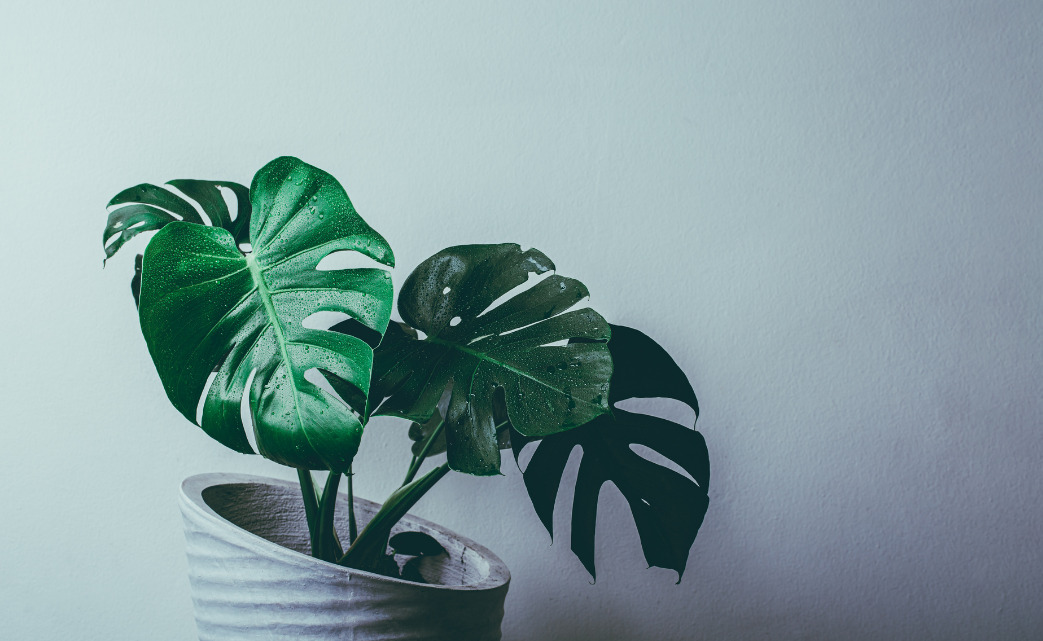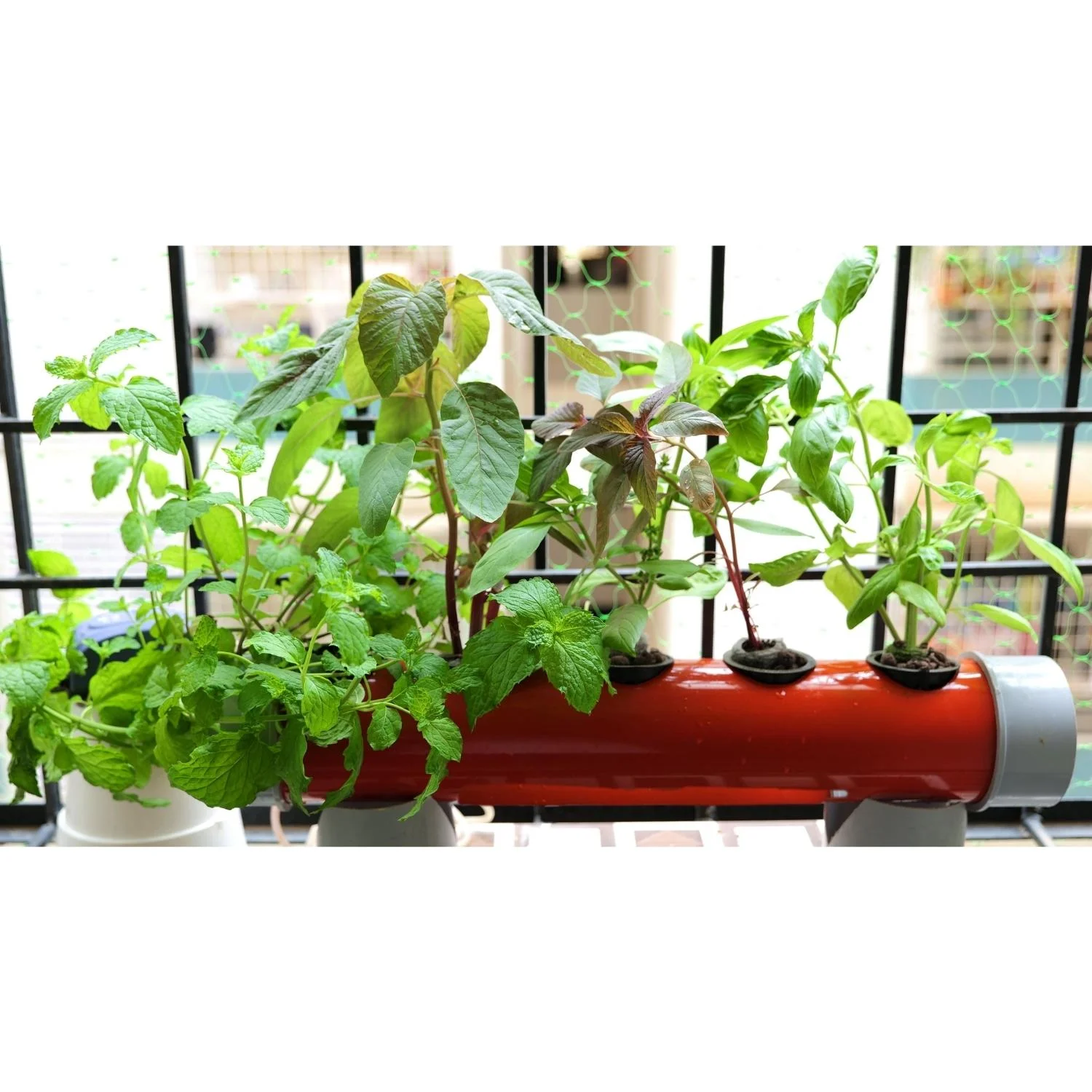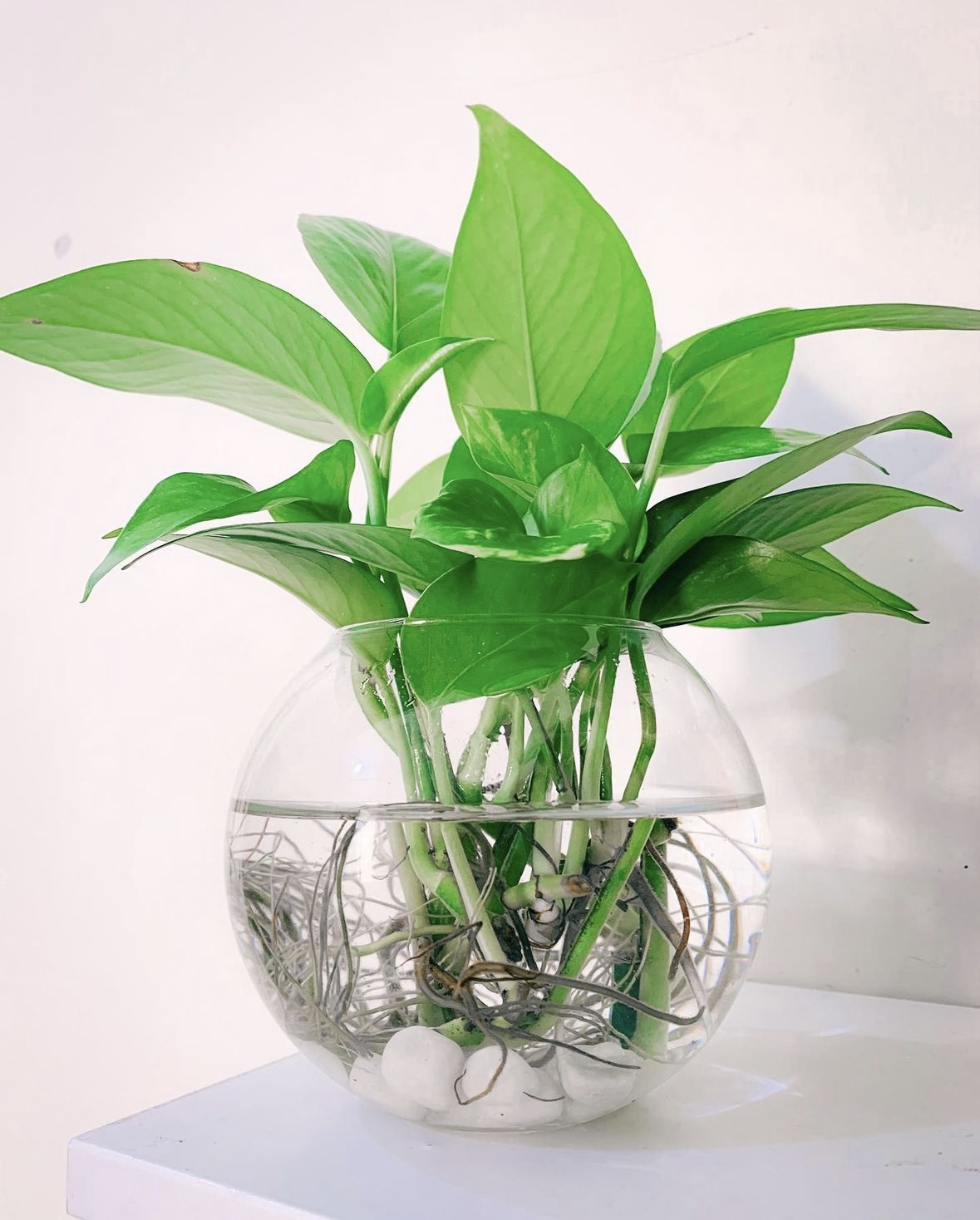Are you looking for a stunning and easy-to-care-for houseplant? If so, you might want to consider Monstera Deliciosa Plant, also known as the Swiss cheese plant or the split-leaf philodendron. This tropical plant is native to Central and South America, where it grows in the rainforest as a vine or an epiphyte. It has large, glossy, dark green leaves that develop holes and slits as they mature, giving them a distinctive appearance.
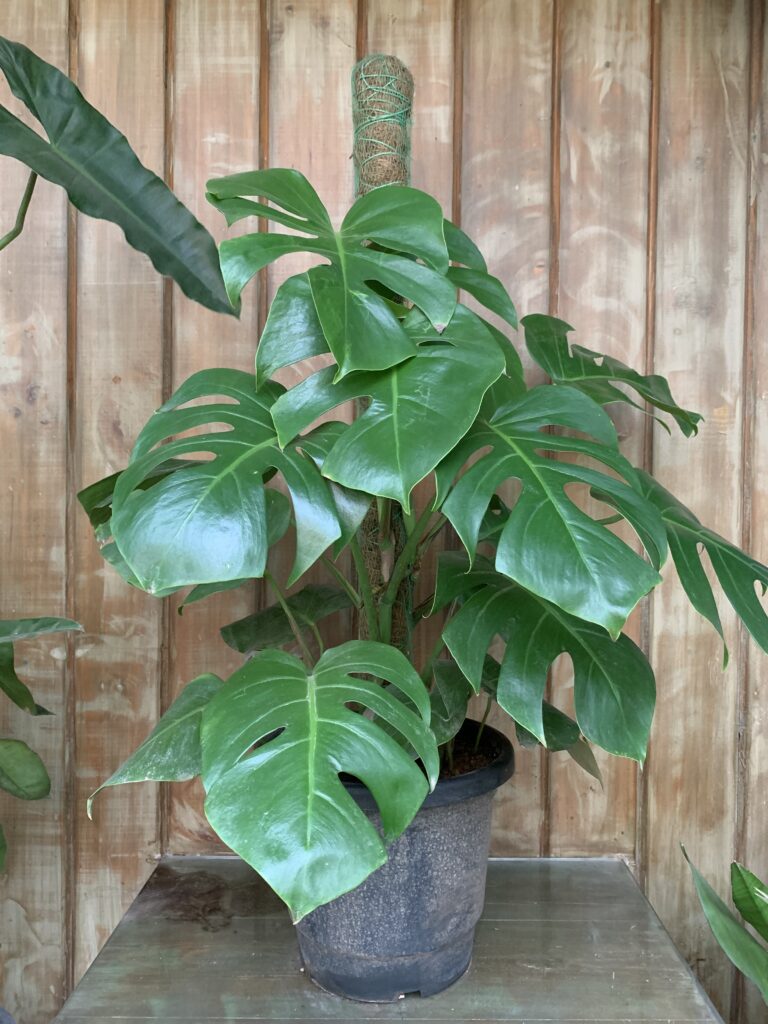
.
Light
Monstera Deliciosa loves bright, indirect light. It can tolerate some direct sun in the morning or evening, but too much exposure in the hotter months can scorch its leaves. You can place your plant near a window that receives filtered or dappled light, such as through a sheer curtain or a tree. You can also use artificial lights, such as fluorescent or LED bulbs, to supplement the natural light.
Monstera Deliciosa can adapt to low light conditions, but it will grow slower and produce smaller leaves with fewer holes. To encourage healthy growth and leaf development, you should rotate your plant every few weeks to ensure even light distribution.
Soil
Monstera Deliciosa prefers acidic or neutral soil that is rich in organic matter and well-draining. You can use a peat-based potting mix that contains perlite, vermiculite, or bark to improve drainage and aeration. You can also add some compost or worm castings to boost the nutrient content of the soil.
Monstera Deliciosa does not like salty soil, so you should avoid using tap water that has high levels of chlorine or fluoride. You can use rainwater, distilled water, or filtered water instead. You can also leach the soil once in a while by flushing it with plenty of water to remove any salt buildup.
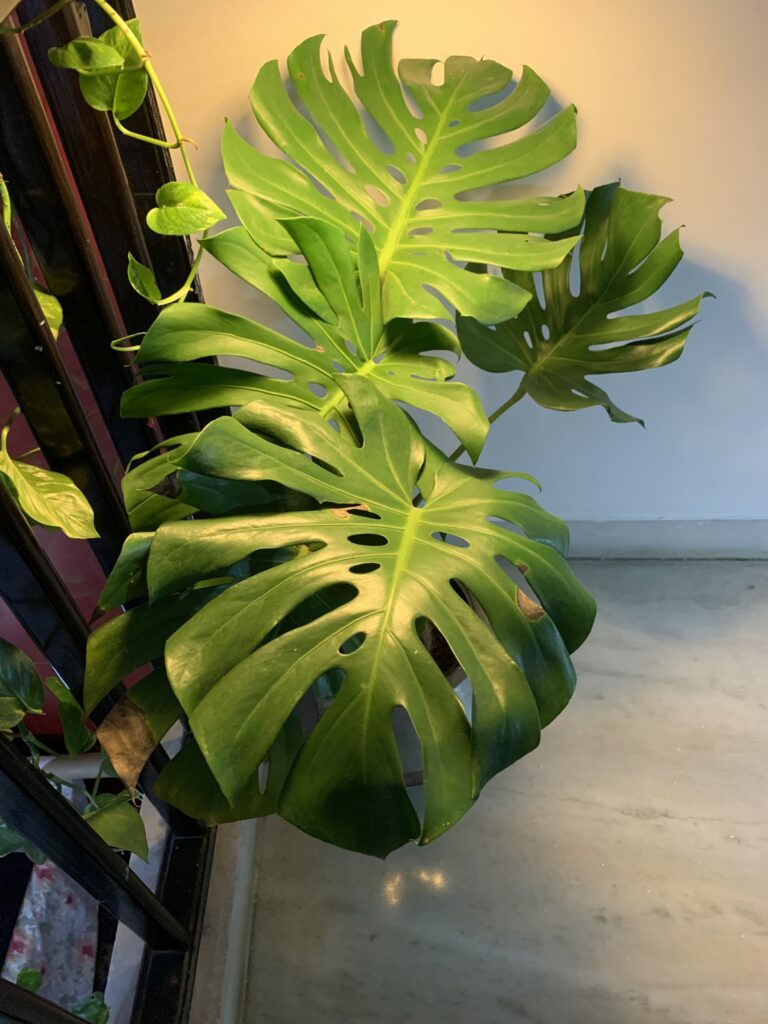
Temperature and Humidity
Monstera Deliciosa thrives in warm and humid environments. It grows best in temperatures between 65 and 85 degrees Fahrenheit (18 and 29 degrees Celsius). It can tolerate lower temperatures down to 50 degrees Fahrenheit (10 degrees Celsius), but it will suffer if exposed to frost or freezing temperatures.
To increase the humidity around your plant, you can mist it regularly with a spray bottle, place it on a tray of pebbles and water, use a humidifier, or group it with other plants. You should also avoid placing your plant near drafts, heaters, or air conditioners that can dry out the air.
Watering
Monstera Deliciosa likes to be watered regularly, but not too much. You should water your plant when the top inch of the soil feels dry to the touch. You can use your finger or a moisture meter to check the soil moisture level. You should water your plant thoroughly until the water drains out of the bottom of the pot. You should then empty the saucer or tray under the pot to prevent waterlogging.
You should not overwater your plant, as this can lead to root rot and fungal infections. You should also not underwater your plant, as this can cause wilting and browning of the leaf tips and edges.
Fertilizing
Monstera Deliciosa needs regular feeding during the growing season to support its growth and leaf production. You should fertilize your plant every 2-3 weeks from spring to summer with a balanced liquid fertilizer diluted to half strength. You can use a general-purpose houseplant fertilizer or one that is specially formulated for tropical plants.
You should not fertilize your plant during the dormant season from fall to winter, as this can cause overgrowth and legginess. You should also not overfertilize your plant, as this can burn its roots and leaves.
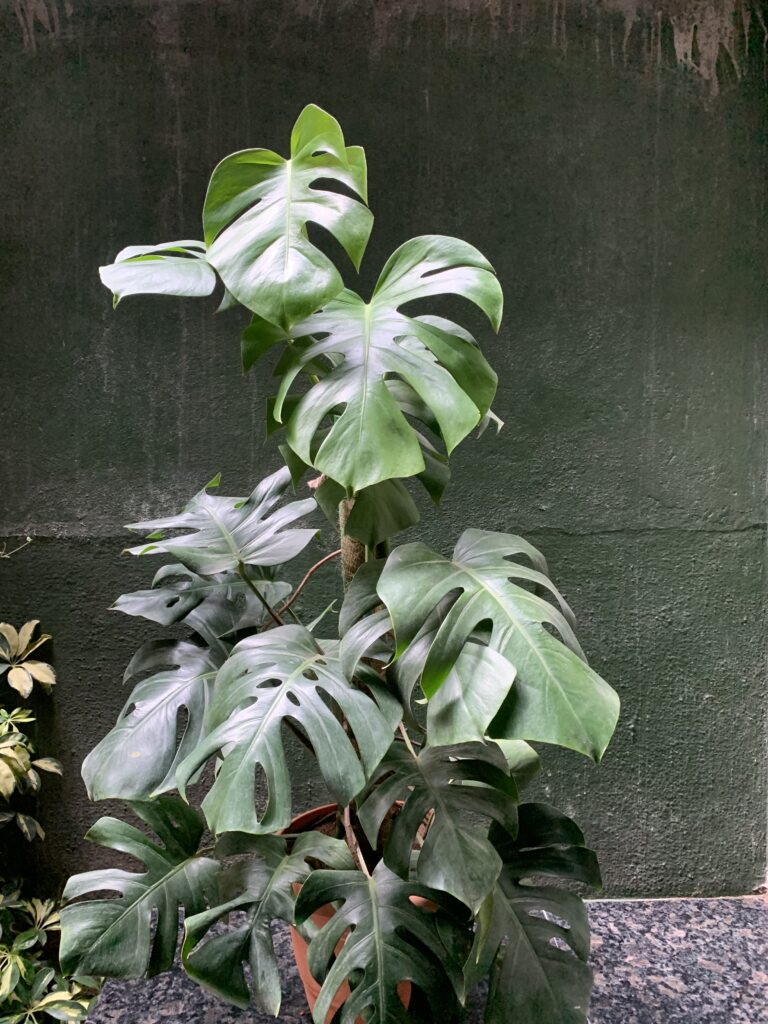
Potting
Monstera Deliciosa does not need frequent repotting, as it likes to be pot bound. This means that its roots fill up the pot and have little room to grow. This helps control its size and prevent it from becoming too large for your space. You can repot your plant every 2-3 years or when you notice that the roots are growing out of the drainage holes.
When you repot your plant, you should choose a pot that is one size larger than the current one. You should also use a fresh potting mix that is suitable for Monstera Deliciosa. You should gently loosen the root ball and remove any dead or damaged roots. You should then place your plant in the new pot and fill it with soil, leaving some space at the top for watering. You should water your plant well and place it in a shady spot for a few days to help it adjust to the new pot.
Propagating
Monstera Deliciosa can be easily propagated from stem cuttings or air layering. Both methods are simple and fun to do, and they allow you to create new plants from your existing one.
Stem Cuttings
To propagate Monstera Deliciosa from stem cuttings, you will need the following materials:
- A sharp and clean knife or scissors
- A healthy stem with at least one node and one leaf
- A glass jar or vase filled with water
- Optional: rooting hormone
Here are the steps to follow:
- Cut off a stem section that is about 6 inches long and has at least one node and one leaf. A node is a small bump on the stem where a leaf or an aerial root emerges. You can make the cut just below or above a node.
- Remove any lower leaves or aerial roots from the cutting, leaving only one leaf at the top.
- Optional: Dip the cut end of the stem in some rooting hormone to speed up the rooting process.
- Place the cutting in a glass jar or vase filled with water, making sure that the node is submerged but the leaf is not.
- Place the jar or vase in a bright spot, but away from direct sunlight.
- Change the water every few days to keep it fresh and prevent algae growth.
- Wait for roots to develop from the node, which can take anywhere from 2 to 8 weeks depending on the temperature and light conditions.
- Once the roots are about 2 inches long, you can transplant the cutting into a pot with soil and care for it as a normal Monstera Deliciosa plant.
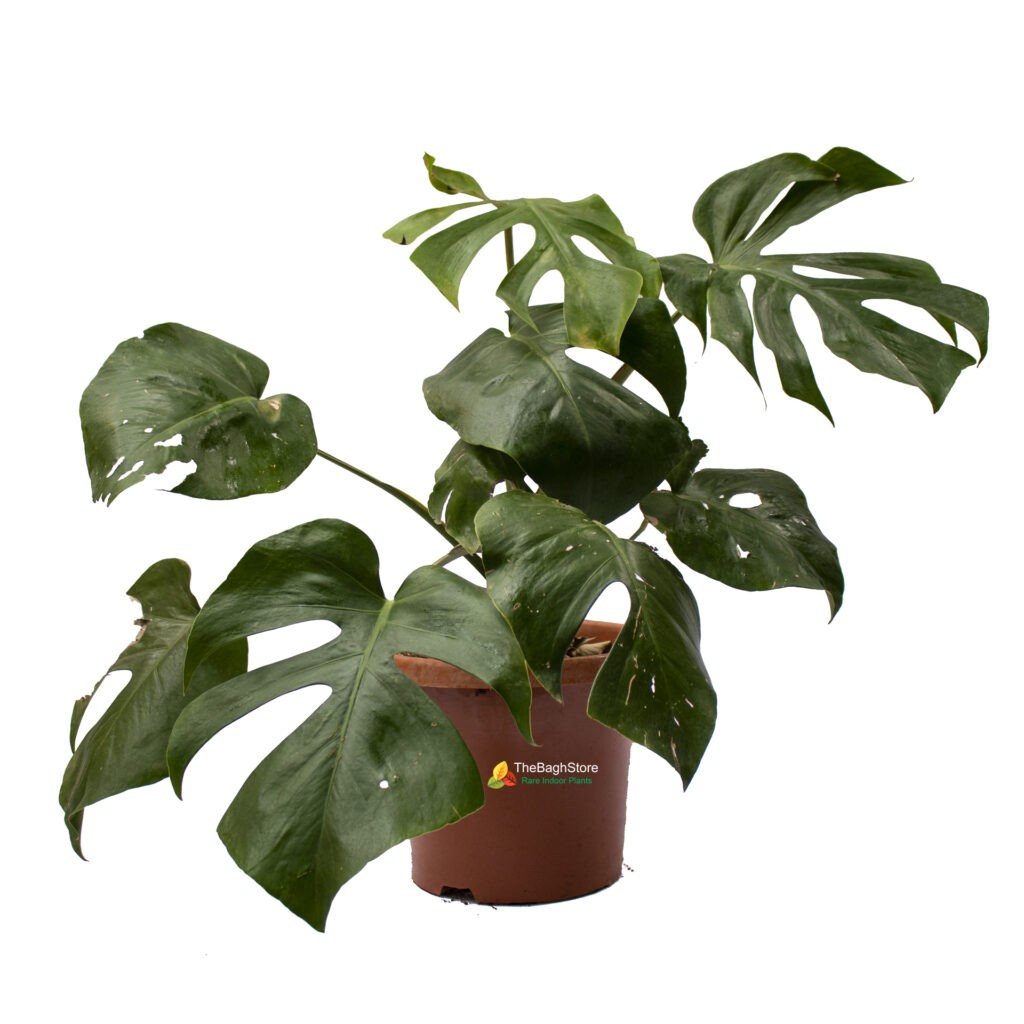
Air Layering
To propagate Monstera Deliciosa from air layering, you will need the following materials:
- A sharp and clean knife or scissors
- A healthy stem with at least one node and one leaf
- A handful of moist sphagnum moss
- A piece of plastic wrap
- A piece of string or twine
- Optional: rooting hormone
Here are the steps to follow:
- Make a small incision on the stem about an inch below a node. The incision should be about halfway through the stem, but not all the way.
- Optional: Apply some rooting hormone to the incision to speed up the rooting process.
- Wrap some moist sphagnum moss around the incision, covering it completely.
- Wrap some plastic wrap around the moss, creating a tight seal.
- Tie some string or twine around both ends of the plastic wrap to secure it in place.
- Leave the air layering in place for 2 to 3 months, checking occasionally to make sure that the moss is still moist and that roots are forming inside.
- Once roots have filled up the moss ball, you can cut off the stem section below the plastic wrap and remove it carefully.
- Plant the rooted stem section into a pot with soil and care for it as a normal Monstera Deliciosa plant.
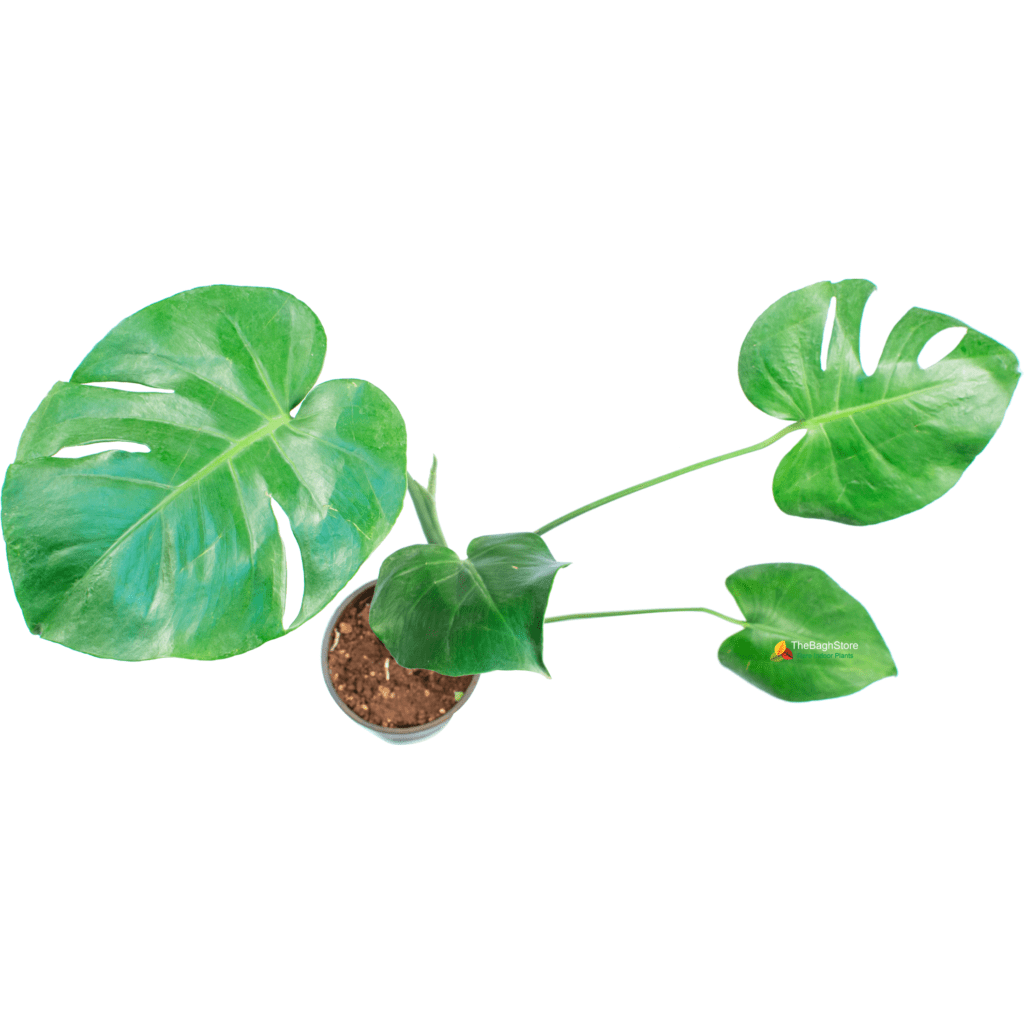
Common Problems
Monstera Deliciosa is generally a hardy and resilient plant, but it can still suffer from some common problems that affect its health and appearance. Here are some of them and how to fix them:
Browning Tips
Browning tips are usually a sign of underwatering or too much direct sunlight. To prevent this problem, you should water your plant regularly, but not too much, and place it in a bright spot, but away from harsh sun rays.
Yellowing Leaves
Yellowing leaves are usually a sign of overwatering, nutrient deficiency, or too much direct sunlight. To prevent this problem, you should water your plant only when the soil is dry, fertilize it during the growing season, and place it in a bright spot, but away from harsh sun rays.
Pests and Diseases
Monstera Deliciosa can be attacked by some pests and diseases that can damage its leaves and stems. Some of them are:
- Scale: These are small insects that suck sap from your plant and leave behind sticky honeydew that attracts ants and fungus. They look like brown or white bumps on your plant’s stems or leaves. To get rid of them, you can wipe them off with a cotton swab dipped in rubbing alcohol, or spray them with a solution of water and soap or neem oil.
- Mealybugs: These are similar to scale, but they are white and fluffy and tend to cluster in the leaf axils or nodes. They also suck sap from your plant and leave behind honeydew. To get rid of them, you can use the same methods as for scale, or use a cotton swab dipped in alcohol to dab them individually.
- Spider mites: These are tiny arachnids that spin fine webs on your plant’s leaves and stems. They feed on your plant’s sap and cause yellow spots, speckles, or streaks on the leaves. They thrive in dry and dusty conditions. To get rid of them, you can increase the humidity around your plant, wipe the leaves with a damp cloth, or spray them with water and soap or neem oil.
- Fungal infections: These are caused by various fungi that can infect your plant’s roots, stems, or leaves. They can cause symptoms such as root rot, stem rot, leaf spots, or powdery mildew. They are usually triggered by overwatering, poor drainage, or low air circulation. To prevent them, you should water your plant properly, use a well-draining soil and pot, and avoid crowding your plant with other plants. To treat them, you can use a fungicide spray or a solution of water and baking soda.
If you notice any signs of pests or diseases on your Monstera Deliciosa, you should act quickly to isolate your plant from other plants and treat the problem accordingly.
Pruning
Monstera Deliciosa does not require much pruning, but you can trim it to maintain its shape and size. You can also remove any dead or damaged leaves or stems to keep your plant healthy and tidy.
To prune your Monstera Deliciosa, you will need a sharp and clean knife or scissors. You should make clean cuts at an angle just above a node or a leaf axil. You should avoid cutting too much at once, as this can stress your plant. You should also avoid cutting the main stem, as this can stunt your plant’s growth.
You can use the pruned stems to propagate new plants if they have at least one node and one leaf.

Blooming
Monstera Deliciosa is capable of producing flowers and fruits if it is happy and mature enough. The flowers are white and resemble calla lilies. They are enclosed by a large green spathe that later turns yellow. The fruits are green and spiky and look like ears of corn. They are edible and have a sweet and tangy taste that resembles pineapple and banana.
However, blooming is rare for Monstera Deliciosa when grown indoors, as it requires optimal conditions such as warm temperatures, high humidity, plenty of water, appropriate light, and adequate nutrients. It also takes several years for Monstera Deliciosa to reach maturity and produce flowers.
If you want to encourage your Monstera Deliciosa to bloom, you should provide it with the best possible care and be patient. You should also avoid moving or repotting your plant too often, as this can disrupt its flowering cycle.

Toxicity
Monstera Deliciosa is toxic to humans and pets if ingested. It contains calcium oxalate crystals that can cause irritation, swelling, burning, or itching of the mouth, throat, or skin. It can also cause vomiting, diarrhea, difficulty breathing, or kidney failure in severe cases.
To prevent poisoning, you should keep your Monstera Deliciosa away from children and pets who might be tempted to chew on its leaves or fruits. You should also wear gloves when handling your plant to avoid skin contact with its sap. If you or anyone else accidentally ingests any part of your Monstera Deliciosa, you should seek medical attention immediately.
FAQs
How much light does a Monstera Deliciosa need?
Monstera Deliciosa needs bright but indirect light to grow well. It can tolerate some direct sun in the morning or evening, but too much exposure in the hotter months can burn its leaves.
Is Monstera Deliciosa toxic?
Yes, Monstera Deliciosa is toxic to humans and pets if ingested. It contains calcium oxalate crystals that can cause irritation, swelling, burning, or itching of the mouth, throat, or skin. It can also cause vomiting, diarrhea, difficulty breathing, or kidney failure in severe cases.
How often should I water my Monstera Deliciosa?
You should water your Monstera Deliciosa when the top inch of the soil feels dry to the touch. You should water your plant thoroughly until the water drains out of the bottom of the pot. You should then empty the saucer or tray under the pot to prevent waterlogging.
What type of fertilizer should I use for my Monstera Deliciosa?
You should use a balanced liquid fertilizer diluted to half strength for your Monstera Deliciosa. You should fertilize your plant every 2-3 weeks during the spring and summer months. You should not fertilize your plant during the fall and winter months.
How often should I repot my Monstera Deliciosa?
You should repot your Monstera Deliciosa every 2-3 years or when you notice that the roots are growing out of the drainage holes. You should choose a pot that is one size larger than the current one. You should also use a fresh potting mix that is suitable for Monstera Deliciosa.
How do I propagate Monstera Deliciosa?
You can propagate Monstera Deliciosa from stem cuttings or air layering. Both methods are simple and fun to do, and they allow you to create new plants from your existing one.
What are some common pests and diseases that affect Monstera Deliciosa?
Monstera Deliciosa can be attacked by some pests and diseases that can damage its leaves and stems. Some of them are scale, mealybugs, spider mites, and fungal infections.
How do I treat pests and diseases on my Monstera Deliciosa?
You can treat pests and diseases on your Monstera Deliciosa by using various methods, such as wiping them off with alcohol, spraying them with water and soap or neem oil, or using a fungicide spray or a solution of water and baking soda.
Hanging Plants for Balcony

The Best Indoor Hydroponic Garden Systems in India for 2024

Top 10 Oxygen-Boosting Plants for Your Home

How to Grow Money Plant in Water

